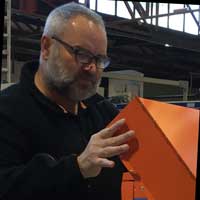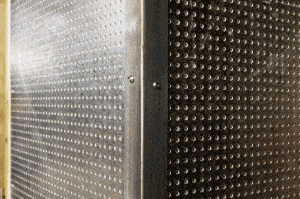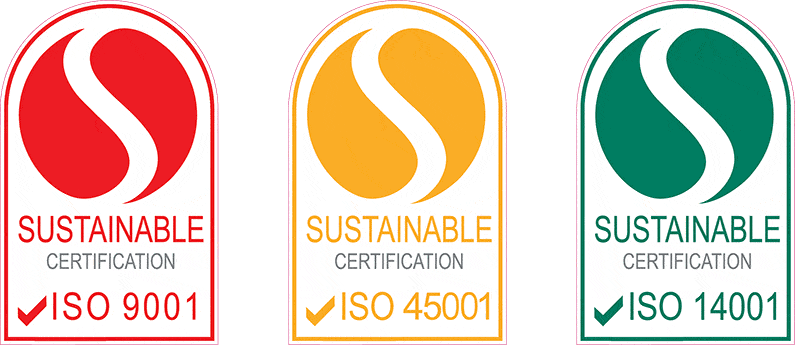
John Rakic
John Rakic is the proud Owner and Managing Director of Trafalgar Group with over 20 years of experience in the passive fire industry.
We can thank Fredrick Grinnell all those years ago, as he is credited for being the creator of the first practical automatic fire sprinkler.
Here in Australia, the Wormalds have been leaders in fire protection design, installation, and servicing since their inception in 1989 as Wormald Brothers. The company was formed more than 125 years ago now, by Joseph Dawson Wormald and Henry Percy Wormald, to introduce Grinnell’s sprinkler technology to Oceania.
So called active or water-based fire protection systems have saved thousands of lives and billions of dollars of property. For an effective fire protection strategy, we need early detection; safe egress paths, smoke control measures, fire compartments, fire brigade intervention and fire stopping of opening in fire barriers around services through which fire and smoke can spread.
This article might be useful to understand some passive fire protection solutions which are available for those working in the active fire space, be it sprinklers, hydrants and hose reels, or the like.
This is just a snippet of the full article. To read the entire article, download the pdf today.
Table of Contents
Do we need to fill holes around services in fire rated barriers?
Globally, building regulations use a combination of fire protection measures to allow designers to design fire safe buildings with a minimum level of protection for occupants, fire fighters, adjoining buildings and the buildings themselves.
Over the last 30 years, I’ve been constantly hearing people talking in terms of ‘them’ and ‘us’ when it comes to active and passive fire protection disciplines. We do not need to choose one fire protection type against the other. The National Construction Code (previously Building Code of Australia) requires both active fire and passive fire measures in most commercial and high-rise residential building types.
For those who don’t know, active measures for the purposes of this guide are those which use water as a method to control or extinguish fires, whereby passive fire protection uses fire compartment barriers to help contain fire and the effect of the fire to one compartment, cell, or zone.
So, to answer the question: YES, we do need to fire stop or fill the holes around services passing through fire rated barriers.
Fire Rated Barrier Types
We’ve all heard the term ‘fire wall’. This is just one of many types of fire rated barriers.
More definitive fire rated barrier types include:
- Fire rated and load bearing walls,
- Fire rated and non-load bearing partitions,
- Fire rated shafts including for example riser, lift, service shaft types,
- Fire rated floor slabs,
- Fire rated floor-ceiling systems,
- Fire rated membrane or self-supporting ceilings, and
- Fire rated bulkheads.
Fire Ratings for Passive Fire Protection Measures
Here in Australia, our Building Code mandates an independently fire tested FRL (Fire Resistance Level) for passive fire protection measures. An FRL applies to a whole assembly or system that has been subjected to the Standard Fire Resistance Test, Australian Standard, AS1530 Part 4-2014. Depending on the passive fire protection measure, the FRL is expressed using many fire resistance criteria for Australian regulatory requirements under our Deemed-To-Satisfy (DTS) provisions.
The fire resistance criteria vary depending on the system type of which there are more than three:
Structural Adequacy
This fire resistance criteria applies to load bearing systems only. It is the ability of the element to remain in place when fire tested under design or working load conditions.
These include:
- Load bearing fire walls
- Load bearing floor slabs
- Structural steel elements (requiring passive fire protection measures)
- Structural timber (requiring passive fire protection measures)
- Support systems (such as cable trays and hydrant pipe hangers requiring passive fire protection measures)
Integrity
This is defined as the ability of the passive fire protection system to resist the passage of fire and hot gases.
Insulation
Poor choice of naming for this fire resistance criteria in my humble opinion. It applies to the ability of the passive fire protection system to limit the temperature rise from the fire side of a barrier to the non-fire side of the barrier.
There are many means through which heat can move from the fire side of a barrier to the non-fire side of a barrier, including via small openings (which form during the effects of the fire exposure), radiant heat, and, of course, heat conduction along the ductile or metallic materials pertaining to any services passing through an opening in a fire barrier. The fire barrier and/or the fire stopping material(s) themselves can (and do) get hot on the non-fire side in a fire, so choice and construction of fire barriers are important and differ depending on the fire rating duration. Longer fire rating, typically a thicker barrier we tend to find unless high performance materials are employed.
Resistance to Incipient Spread of Fire (RISF)
Applies to all fire rated floor/ceiling systems. The RISF limits the temperature inside the floor/ceiling cavity to prescribed limits and durations, including where services pass through the floor/ceiling system.
Limiting Steel Temperatures
I included this one as it’s a unique fire resistance type which relates to design of steel structures for fire. AS4100 (which is a compliance pathway in our Building Code here in Australia) provides the requirements to protect steel with passive fire protection materials, helping us with requisite relationship between critical steel temperature, steel section factor (Hp/A) and thickness of the passive fire protection material required.
Protection of Openings for Active Fire Service Pipes
To me, we are dealing with a simple situation. An active fire services pipe (such as a sprinkler pipe or hydrant pipe) passes through a fire barrier, and therefore the FRL of the fire barrier needs to be maintained with a fire tested system with the requisite FRL or fire rating.
However, somehow it gets totally over-complicated and is often misunderstood.
If you think about the fire dynamics and physics at play here, it’s relatively simple.
1. Ensure the pipe is supported correctly on both sides of the opening,
2. Fill the opening in the fire barrier as to stop the passage of flames and hot gases, and
3. Ensure that the heat conduction through the copper or steel pipe on the non-fire side is kept cool enough to avoid the potential ignition of combustibles causing fire spread across the barrier.
Where it gets a little messy or complicated is the Building Code of Australia requires fire testing to AS1530 Part 4-2014 to determine fire tested systems which provide the requisite FRL.
This is where we, Trafalgar Fire, come into play; to try and help industry with education and application of our vast number of systems which can maintain the FRL of openings for metal and other pipe types passing through fire barriers.
We’re always trying to improve the practicality and the cost effectiveness of our systems for passive fire protection of pipes passing through the many different fire barrier types. It never ends for us at Trafalgar Fire; this is our core business and how we earn a living.
I will discuss some of the Trafalgar Fire systems and their evolution further on in this guide, but it’s probably prudent to discuss some history to put things in context.
What has changed in terms of passive fire protection and protection of metal pipes through fire barriers?
From a regulatory perspective, nothing has really changed. Since our first Building Code in 1990, the protection of openings for services remains essentially the same.
However, enforcement of the Building Code technical provisions is now being taken much more seriously than previously here in Australia.
There are probably many factors which have led to better or more stringent enforcement of the technical requirements of the Building Code, which I believe include:
- The impact of the tragic fire at Grenfell as well as our own fires locally such as Lacrosse Towers and Neo Apartments
- The bad publicity around the poor quality of construction in high rise residential apartment or Class 2 building types
- The insurance industry making it more difficult for Fire Safety Engineering
- The advent in NSW of the pending Design and Building Practitioners Act
Notwithstanding the above, there is more of an appetite to do things correctly and this can only be a good thing.
Where does some of the confusion come from?
From my perspective (and from listening to the market including the large number of technical enquiries we field at Trafalgar Fire), I can summarise the key areas of confusion as:
Confusing and Tired Building Code Provisions Especially Specification C3.15
It’s time to fully retire NCC Specification C3.15.
NCC2019 still includes ‘Specification C3.15’ which offers a very limited concession for some metal pipes. The specification is hard to apply and almost impossible to maintain over the life of a building. Most do not realise that this requires fire testing which is essentially the same as AS1530 Part 4-2014 (as well as testing to an old ISO standard for coal and coke ash!).
Too many people co-mingle part of C3.15 and Specification C3.15, which are different parts of NCC2019.
Abstract from Specification C3.15
Material: The material used for the fire-stopping of service penetrations must be concrete, high-temperature mineral fibre, high-temperature ceramic fibre or other material that does not flow at a temperature below 1120°C when tested in accordance with ISO 540, and must have—
ii)
demonstrated in a test in accordance with (e) that it does not impair the fire-resisting performance of the test slab.
(e)
Test: The test to demonstrate compliance of a fire-stopping material with this Specification must be conducted as follows:
(i)
The test specimen must comprise a concrete slab not less than 1 m square and not more than 100 mm thick, and appropriately reinforced if necessary for structural adequacy during manufacture, transport and testing.
(ii)
The slab must have a hole 50 mm in diameter through the centre and the hole must be packed with the fire-stopping material.
(iii)
The slab must be conditioned in accordance with AS 1530.4.
(iv)
Two thermocouples complying with AS 1530.4 must be attached to the upper surface of the packing each about 5 mm from its centre.
(v)
The slab must be tested on flat generally in accordance with Section 10 of AS 1530.4 and must achieve an FRL of 60/60/60 or as otherwise required.
Water Filled Pipes
I often hear that pipes that are water filled have not been fire tested so we must use Fire Safety Engineering. Well, that’s garbage.
Unfilled pipes when fire tested are by far a worst case and the result for these can easily be applied to water filled pipes.
Over-Zealous and Perhaps Impractical Fire Safety Engineering
Builders reach out to Fire Safety Engineers to get an alternative solution to remove the insulation or temperature rise criteria to avoid “wrapping” or other forms of fire tested protection for metal pipes.
My firsthand experiences here show me that the poor building owner ends up paying retrospectively to “wrap” or adequately protect these pipes, as under ongoing AS1851 inspection and testing through the life of the building, these “unprotected” or “unwrapped” pipes are defected and subsequently “protected correctly” or “wrapped”.
I also believe the cost benefit analysis of the cost to comply with the NCC DTS provisions using fire tested systems may be done incorrectly. At Trafalgar Fire, we have worked hard to improve cost effectiveness for fire tested systems for protection of metal pipe penetrations.




